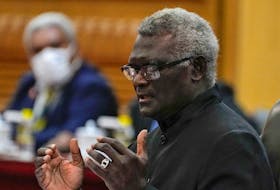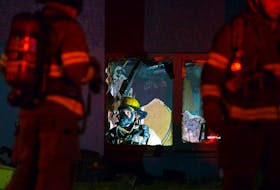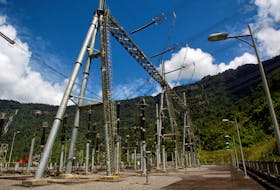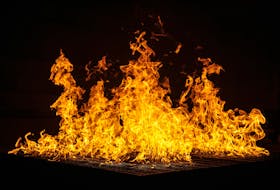Cadet firefighters now know what it feels like to be victims of a plane crash.
Twenty-nine students from the Holland College Police Academy’s basic firefighter program took part in a large-scale emergency exercise at the Charlottetown airport on Wednesday.
Emergency personnel, including police services, fire services and Island EMS, were also on hand.
Shelley Christian, VP of operations with the Charlottetown Airport Authority (CAA), said Transport Canada requires regular testing of emergency response plans and training for all local response agencies to occur every four years.
The CAA, which hosted the exercise, reached out to the Emergency Measures Organization (EMO) to collaborate with it to execute the simulation.
This type of exercise is important for the co-ordination and communication for all agencies involved, Christian said.
“It’s a really great opportunity to get people more familiar with the airport in the case that they ever have to respond in some capacity.”
“Plans are wonderful to have in a binder, to write down, but if you don’t practise it, you don’t know where the gaps are. “We need to practise to make sure it all works. It’s all about developing muscle memory.”
-Tanya Mullally
All aspects of emergency response are tested through full-scale exercises, said Tanya Mullally, EMO’s provincial emergency co-ordinator.
“If something like this should really happen, everybody knows their job, they know where to report and they know the process to co-ordinate an official response. It’s really about testing the plan,” she said.
“Plans are wonderful to have in a binder, to write down, but if you don’t practise it, you don’t know where the gaps are,” she said, adding the challenge is co-ordinating multi-agency response. “We need to practise to make sure it all works. It’s all about developing muscle memory.”
Mullally, a former firefighter, said it’s good for the cadets to take part in the exercise.
“Being able to participate as a casualty, you then have a different appreciation of how you should respond, knowing what are those people feeling, what are they experiencing when all these people rush to the scene and chaos is happening. So it’s a great opportunity for them to experience that.”
Cadet James Schumacher agreed that it’s important to see what it’s like to not only be a rescuer but to also be rescued.
“We’re here to be familiar with that very concept so that we ourselves in our firefighting careers will know what to do in such a situation, how to handle the victims in distress, how to know how best to treat injuries and what needs to be done,” said the 24-year-old from Annapolis Royal, N.S.







